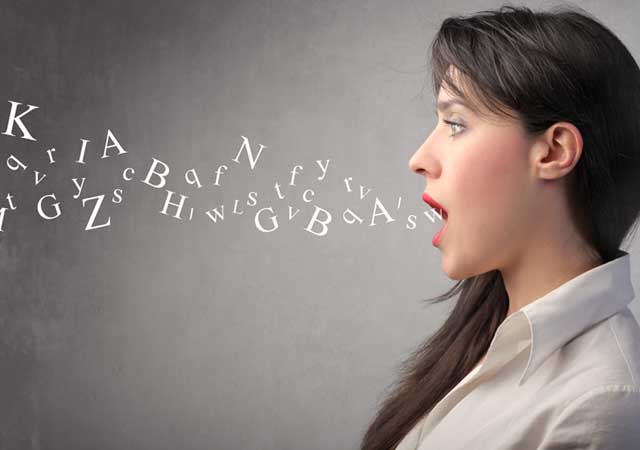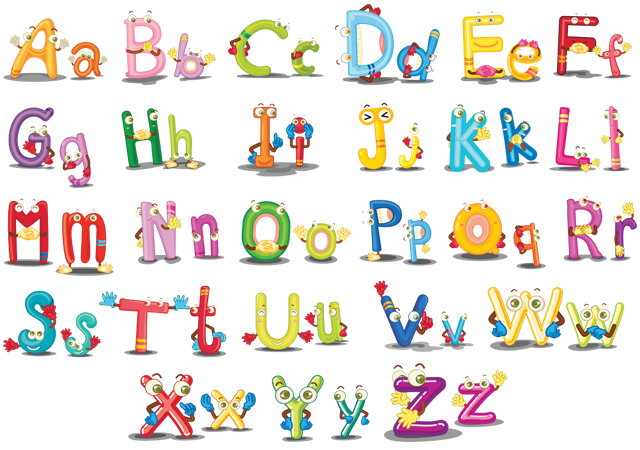
Inizia con Becca! Imparare a produrre suoni in italiano
Beginning Italian with Becca! Learning to make Italian sounds
Benvenuti al primo passo dell’apprendimento!
Welcome to the first step of learning Italian!
Ciao a tutti! Ho una nuova studentessa interessata a imparare l’italiano. Si chiama Becca e ho preparato per lei la sua prima lezione: i suoni italiani. È stato un grande successo, quindi ho pensato che potesse essere utile anche per alcuni di voi.
Hello everyone! I have a new student who is interested in learning Italian. Her name is Becca, and I have prepared her first lesson: Italian sounds. It was a great success, so I thought it might also be helpful for some of you.

Perché i suoni sono importanti?
Why are sounds important?
Anche se pensi che concentrarti sull’alfabeto italiano sia troppo elementare e che preferiresti passare subito al vocabolario e alla grammatica… Fermati! Ho imparato dall’esperienza personale che è fondamentale familiarizzare con i suoni comuni dell’italiano.
Even if you think focusing on the Italian alphabet is too basic and you’d rather jump straight into vocabulary and grammar… Stop! From personal experience, I’ve learned it’s essential to familiarize yourself with common Italian sounds.
La tua vita sarà molto più semplice se ti prendi un momento per guardarti allo specchio e praticare come creare i suoni italiani. A lungo termine, una volta padroneggiati, ti avvicinerai a parlare come un madrelingua più rapidamente, e quando incontrerai nuove parole riuscirai a pronunciarle facilmente.
Your life will be much easier if you take a moment to look at yourself in the mirror and practice creating Italian sounds. In the long run, once mastered, you’ll sound more like a native speaker sooner, and when faced with new words, you’ll easily pronounce them.

L’italiano: una lingua fonetica
Italian: A phonetic language
L’italiano è una lingua fonetica. Ciò significa che le parole si pronunciano spesso come sono scritte! Le regole di pronuncia italiana sono costanti. Questo vuol dire che, una volta imparate, puoi pronunciare correttamente QUALSIASI parola italiana che vedi scritta, anche se non l’hai mai sentita prima.
Italian is a phonetic language. That means words are often pronounced the way they are spelled! Italian pronunciation rules are consistent. This means that once you learn the rules, you can correctly pronounce ANY Italian word you see written, even if you’ve never heard it spoken before.
Quando parli italiano, sentiti libero di esagerare i suoni! Non importa se ti senti sciocco: questo è semplicemente il modo italiano, e la pratica è fondamentale.
When speaking Italian, feel free to exaggerate the sounds! Never mind if you feel silly: that’s simply the Italian way, and practice is key.
Intonazione e ascolto: due regole d’oro
Intonation and listening: Two golden rules
Le intonazioni italiane seguono regole semplici: l’accento cade solitamente sulla penultima sillaba. Ad esempio: bam-BI-ni. L’eccezione sono le parole con accenti grafici sull’ultima lettera, dove l’accento cade sull’ultima sillaba.
Italian intonation patterns follow simple rules: The stress is usually on the second-to-last syllable. For example: bam-BI-ni. The exception is words with accent marks on the last letter, where the stress is on the last syllable.
Trova sempre il tempo per ascoltare! Ti fornirà gli strumenti giusti per affrontare eventuali problemi di pronuncia e renderà più facile produrre i suoni.
Always find time to listen! It will give you the correct tools to handle any pronunciation issues and make producing sounds much easier.*
A-Z! Italian Pronunciation explained
When ever in doubt refer to the FORVO site
where you can hear native speakers say words for you.
A pronounced like English word ‘ah’ —> albero (tree)
albero
B pronounce as in English ‘b’ —> banana (banana)
banana
C followed by ‘e’ or an ‘i’, pronounced ‘ch’ —> ciocolato (chocolate)
cioccolato
C followed by ‘h’ sounds like the ‘c’ in candy —> cane (dog)
cane
D pronounced like ‘d’ —> dadi (dice)
dadi
E pronounced as in English open ‘e’ in ‘net’ —> elefante (elephant)
elefante
E Can be pronouncedas in English ‘a’ in ‘say’ —> eccellente (excellent)
eccelente
F – Same as in English —> fiore (flower)
fiore
G followed by an ‘i’, or ‘e’ will be sound like the ‘j’ in jumble —> gelato (ice cream)
gelato
G followed by ‘n’, will sound like word ‘onion’
gnocchi
G letters ‘a’ sounds like English word ‘gate’ —> gatto (cat)
gatto
H is used rarely on its own, defines hard ‘c’ —> chiesa (church)
CHiesa
I pronounced like the ‘ee’ see’ —> Italia (Italy)
Italia
J pronounced same as English “yah”
K pronounced same as English
L pronounced same as in English —> leone (lion)
leone
M pronounced same as in English —> mela (apple)
mela
N pronounced same as in English —> nave (ship)
nave
O pronounced as in English ‘o’ —> orologio (clock)
orologio
P pronounced as in English —> pera (pear)
pera
Q pronounced as in English ‘k’ —> quadro (painting)
quadro
R pronounced rolled —> ruota (wheel)
ruota
S pronounced as in English —> sole (sun)
sole
T pronounced as in English —> tavolo (table)
tavolo
U pronounced as in English ‘oo’ in ‘boo’ —> uva (grape)
uva
V pronounced as in English —> vaso (vase/jar)
vaso
W pronounced as in English ‘v’
X doesn’t exist
Y doesn’t exist
Z pronounced as in English ‘ts’ —> zio (uncle)
zio
Unusual sounds: Double consonants, GN, and GLI
Don’t be afraid of Double consonants,
or unusual letter combination GN or GLI
Sometimes you will see the same consonant twice in a row in an Italian word. Here is a tip: when you see double consonants or i consonanti doppie you need to hold or prolong the sound a beat longer.
Very common letter combination — they may seem intimidating at first but necessary to master right from the beginning! Important because not prolonging a double consonant can change the meaning of the word (example: Anno = Year, Ano = anus, Sera = evening, Serra = greenhouse.
“GN” Sound
Don’t be intimidated by the combination GN — especially when you see
Gnocchi or Lasagna on the menu. It is pronounced as “ny” in “canyon”
Gnocchi gnocchi – a type of small potato dumpling served in sauce like a pasta.
“GLI” Sound
Gli is a masculine article, but you will also find this letter combination within other words.
Figlio– son
Maglietta – sweater
Che, Chi, Ci e Ce
Learn this so you will always pronounce bruschetta correctly!
BroosKETTA non Brooshetta!
Why? When the letter C is followed by an H in Italian, it creates a hard sound:
Che = Kay
In Italian, to make the CH sound, if you are an English speaker you must “retrain your brain.”
In Italian, the CH combination makes a hard sound like the “K” in “Karma”, not like the “Ch” in “Chocolate.”
On the other hand, when the letter C is followed by a vowel, it creates a soft sound:
Ci = Chee, Ce = Chey
It is similar to the soft “cha cha cha” or “choo choo” in English. Examples: Leonardo da Vinci, Cappuccino, Ciao.
Ora è la tua missione correggere ogni cameriere americano negli Stati Uniti su come dire correttamente la parola bruschetta! Credimi… LO FACCIO SEMPRE!
It is now your mission to correct every American waiter in the United States on how to properly say the word bruschetta! Believe me… I ALWAYS DO!
Per padroneggiare i suoni italiani, assicurati di ascoltare l’italiano ogni giorno!
To master Italian sounds, make sure you listen to Italian every day!











Una lezione molto preziosa e tanto nececessaria